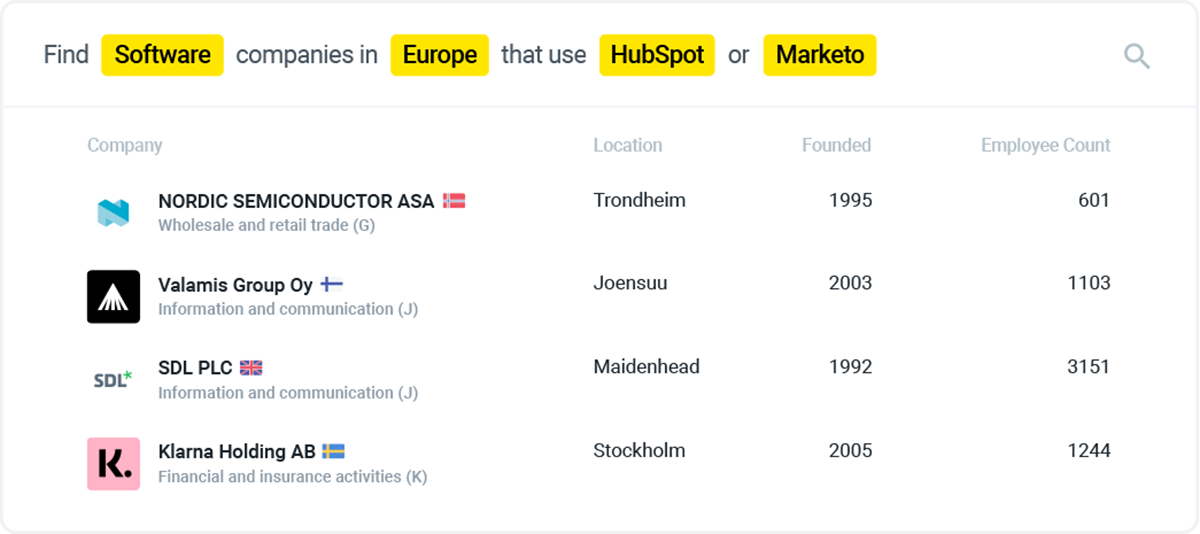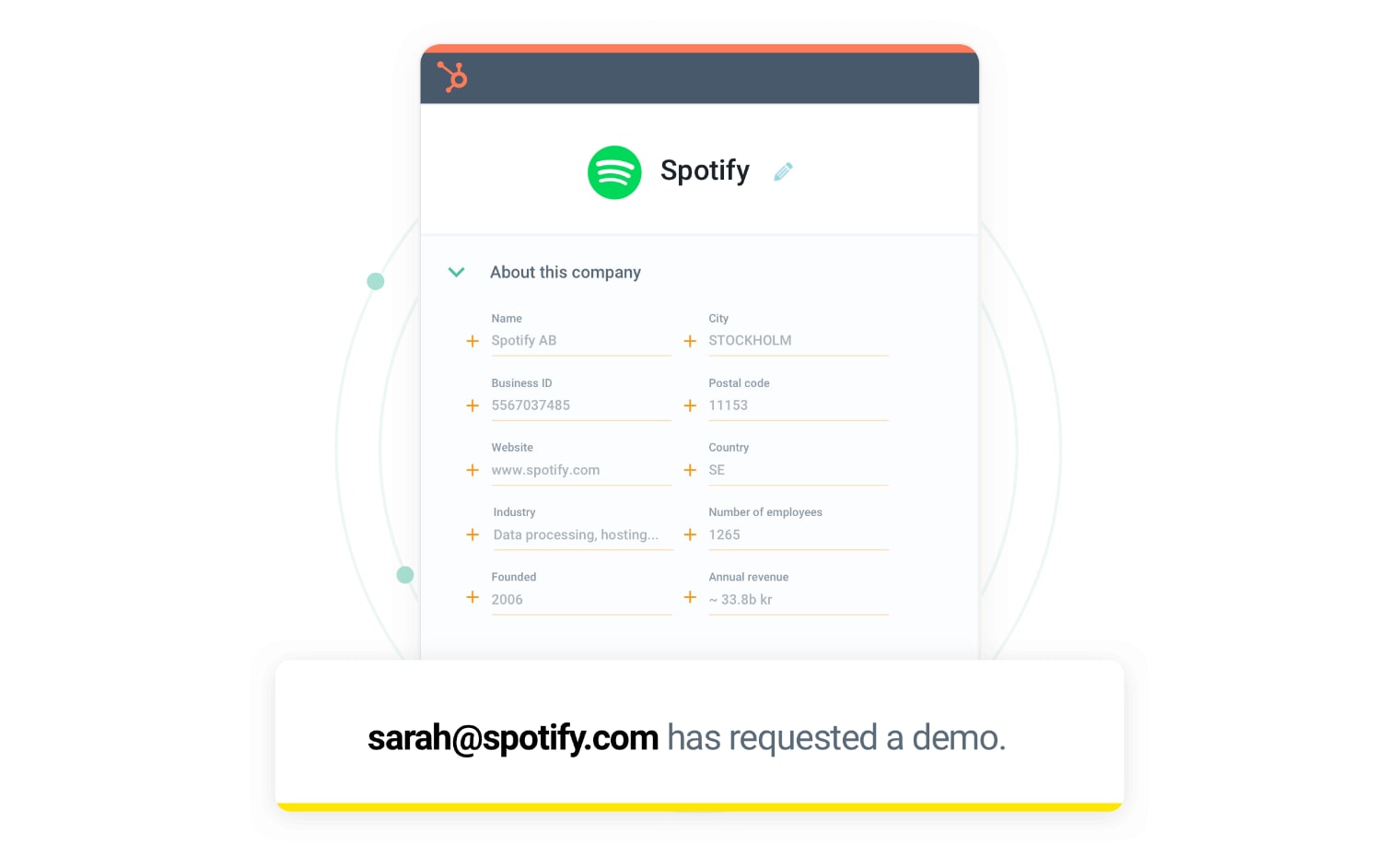Market Entry: How To Expand Your B2B Business To The Nordics
Entering a new, unknown market is like being the new kid at a new school. The possibilities are endless when it comes to making new friends, or in the business world - finding new customers. Still, getting that first great connection can be more challenging than expected.
Imagine a technology that knew all of your characteristics, thoughts, and interests, and matched you with the people you had the best chance of getting along with. While we haven’t yet automated the process of making friends, these tools do exist in the business world. Tools like these provide access to myriads of company data, allowing you to filter through millions of companies to find the ones that match closest to your ideal customer profile.
When entering a new market, sales intelligence can help you find the right companies for your organization to focus on first. In this article, we’ll see how to get started with a market entry strategy and go through an example of how the technology can help you expand your B2B business to the Nordics.
The pillars of a market entry strategy
Understand and reach every potential customer
First, the basics. A market entry strategy that works starts by knowing your total addressable market— all opportunities to create revenue within your active market.
There are two main ways to estimate your total addressable market: bottom-up analysis and top-down analysis. Regardless of the method you choose, you’ll need a very specific understanding of your ideal customer profile and then you must figure out the total number of customers in the market you’re planning to enter.
A company database like Vainu is an excellent tool to generate such a list if you’re aiming at expanding your B2B business to the Nordics. Or you can use any provider of lists of companies in Europe.
Understand the trends and tendencies in your space
Different industries have different rules. If your market entry is based on the expansion to new countries, like the Nordics, you’ll need to have a very good understanding of how business is done in those countries or specific industries.
In order to have more insightful conversations tailored to your targeted companies or develop marketing strategies like account-based marketing, you have to not only understand their business, but also their industry, their challenges, and the problems that might keep them up at night. Reason typically resonates with people—make sure to give them some good ones.
One of the key success factors for an ABM program is the specificity of your target account lists. Unfortunately, if you’re solely relying on basic firmographic data points, you might notice that you’re not always able to find the companies you’re looking for. This is especially true if you’re trying to approach a specific vertical that is not part of a national or international standard industry classification system. Vainu's AI-based industry classification system solves this issue. If you want to find out how Vainu Custom Industries can help your account-based marketing campaigns, we've got the article for you—read it here.
While needs vary from market to market, the type of organization that has a need for your product are likely very similar.
Create smart shortlists
While needs vary from market to market, the type of organization that has a need for your product are likely very similar. Finding lookalike accounts (or companies that are similar to your existing customers) and reaching out to them is a smart shortcut to your company’s first milestone of 10 customers in your new market.
Static data doesn't cut it. Use a dynamic company database like Vainu to filter companies with a specific set of characteristics matching your ideal customer profile. Tailor your marketing and sales efforts for your shortlisted accounts.
Act on trigger events
Be agile. While you don’t have to have a well-known name or a huge customer base to prove your value, you do have to be smarter than the competition. Track trigger events from your target companies and act on the events that indicate a window of opportunity for you as a salesperson is about to open up. For example: if you offer transportation services, reach out to the companies who have recently initiated a new construction project, or even opened a new factory in your region. They are likely to need your services soon.
Market entry example: How to expand to the Nordics
When Vainu expanded to the Nordics, starting in Sweden, many people outside the company had questions regarding our efforts: Why to Sweden? What is your go-to-market strategy? Are you using external consultants? Are you raising capital? Are you making any PR efforts when you are expanding?
To be honest, we didn’t know the answers to many of those questions. They just come along the way when we are busy talking to clients and future clients. But in a bigger perspective a good market entry should be like a good SaaS product: scalable, but open for little alterations. It needs have clear focus, and developed through market feedback. But most importantly, it needs to be sticky.
Below, we’re explain our market entry strategy. We did some things right and some others, not so well. Nevertheless, it was a plan. Here it goes, in four steps.
Step 1: Find prospects
For sales prospecting, we use our own software to find Swedish prospects that are alike our Finnish clients. They must match the description of our ideal customer profile.
We also use inbound marketing tactics. In the world of B2B sales, effective content marketing doesn’t require a complex marketing automation system to get started. Sometimes a free Mailchimp account and some blog posts, ebooks or webinars each month are all it takes to get the ball rolling. And once the number of leads in the funnel increase it's easy to add more automated rules in the process by implementing some sort of automation software in the workflow. By the way, trigger events can also be useful to find excellent blog ideas.

Step 2: Research
Once we know our total addressable market and have a list of prospects, we deep dive into company information to draw valuable account insights and understand the market we’re entering.
This information gives us a good sense of whether the target market is suitable.
In a sales process the answer is rarely a strict ”yes”, or a strict ”no”. It is usually somewhere in between and then it either comes in or fades away. So it is important that these prospects that we’ve discussed with are aware of us in the long run.
Step 3: Set up meetings
We use data from Vainu to contact these companies to set up a meeting. If we can’t have a meeting we send them to our lead nurturing funnel. If the meeting doesn’t turn out well we add them to our nurturing process as well.
Disclaimer: It’s been a while since our market entry into Sweden and we’ve learned a few things about how to pull off a successful first sales meeting.
In a sales process the answer is rarely a strict ”yes”, or a strict ”no”. It is usually somewhere in between and then it either comes in or fades away. So it is important that these prospects that we’ve discussed with are aware of us in the long run. For nurturing, marketing automation doesn’t need to be a complex system. It can be also a free Mailchimp account and few blog posts every month.
Step 4: Iteration
Repetition is key: When we are able to convert 50% of sales conversations into meetings and over 10% of sales meetings into deals we can trust that the market is ready for scale.


